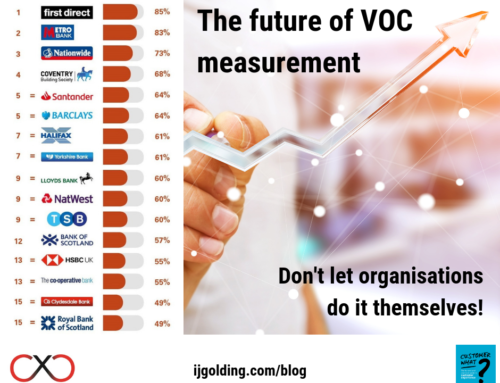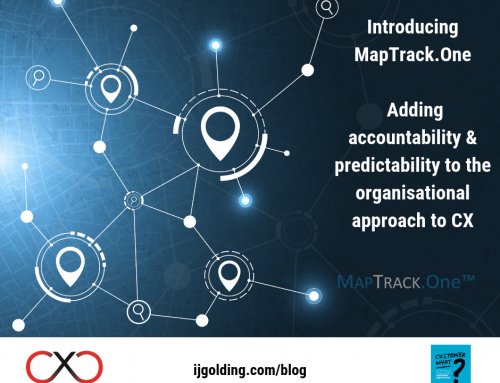
In the ‘Customers 2020 Progress Report’ (Walker), it is predicted that Customer Experience (CX) will surpass price and product as the key differentiator by the year 2020. Right now, CX and Voice of the Customer (VoC) are considered to be the two most important areas of improvement if a business wants to remain competitive.
For a B2B company, the ability to retain clients can be the difference between success and failure. So understanding the Voice of the Customer and using feedback to inspire meaningful change is paramount. Here we look at why VoC is important for B2B, and how it should be used in order to be provide value.
WHY VOC WORKS WELL FOR B2B
VoC has been an invaluable tool in the B2C for many years. Today, it’s just as important for B2B businesses to be customer-centric. An outdated view would be that retail customers require more consideration when it comes to dealing with complaints and feedback. But CX is just as critical for trade transactions.
In many ways, VoC programs work even better in a B2B environment by bringing much bigger rewards. When compared to a B2C model, business-to-business relationships last longer and hold greater value. Each account brings more revenue and more repeat custom than a single consumer does. So investing in these relationships has a direct, positive impact on ROI.
When trading with a business, there are also a lot different components to factor in. This can be multiple stakeholders, including influencers at partner and end-customer level. So due to the complex nature of B2B relationships, having a strategy is all the more necessary. CX and VoC strategies are required to understand the wants and needs of key decision makers, and to identify at-risk accounts before they exit.
Ultimately, establishing the Voice of Customer in your client base will help you leverage positive reviews and organic word-of-mouth, which will help you grow your business.
DEPLOYING VOC IN A B2B ENVIRONMENT
The adoption of feedback programs is happening at an incredible rate across the industry. Yet few B2B enterprises implement strategies successfully, and simply clone programs that have been used in a retail environment.
It’s important to note that a B2B VoC strategy should be structured with more focus on inspiring internal changes within the organization. The key difference between a B2C and B2C VoC program is that the latter requires a complete shift in company culture.
This means that companies need to be reactive and be ready to put changes into effect in order to close the customer feedback loop.
A program must also account for the demands of a multifaceted audience, both internally and externally. Key tasks will include finding incentives for sales reps and reaching out to different influencers such as purchasing agents and end-consumers.
When conducting surveys, it’s also important to choose the right metrics to garner feedback. B2B accounts can be worth millions for some businesses, so questions and answers have to provide measurable value at the end.
There’s also the challenge of marketing your VoC program to the rest of your organization. Colleagues who buy into the program are more likely to help it succeed, so it’s essential to enlist supporters from grass roots level to executive level.
VOC TECHNOLOGY AND WHY IT’S IMPORTANT
Finding the right VoC platform is crucial if you want to successfully improve your service. One of the biggest failures with VoC campaigns today is not making changes once feedback has been collected. The goal of any program should be providing actionable goals to make necessary adjustments. An effective platform should assist you in doing that, by providing a closed feedback loop system. This ensures that departments respond to customer issues and remain proactive in resolving problems.
The best VoC technology should also be able to integrate seamlessly. It needs to link customer feedback to sales and operational data, and make results accessible company-wide. Something that happens a lot in businesses today is silos of surveys, information that isn’t shared or assimilated.
Organizations can now exploit technology to tackle these problems. By choosing a VoC platform that combines surveys, sales, CRM and financial data, they can pioneer a unified approach for better business success.
Kimberly Holbrook is the Sales Director for the Automotive division at MaritzCX. Kimberly spent 20 years in the auto finance industry working for various companies—including Bank of America, Chase Auto Finance and Ford Motor Credit Company—specializing in the various aspects of territory/portfolio management, business development and financial services.
Find out more about how MaritzCX technology can help you gain insight and drive action today.
My book, ‘Customer What? – the honest and practical guide to customer experience’ – is now available to purchase! You can do so on Amazon.com or Amazon.co.uk. If Amazon does not ship to your part of the world, please complete the form found here and I will arrange an alternative method to ship a book to you. Enjoy the read!!







could you please clarify more what different between VOC for B2C and B2B?
There are a number of likely differences – the most prevalent are:
1. The population size of a B2C organisation is likely to be significantly higher than a B2B, so the frequency of a B2B VOC survey is typically less than a B2C (i.e. quarterly, bi-yearly, or even annually)
2. A B2B VOC study will need to determine not just who your customers/clients are that need to be surveyed, but also the different people within each customer/client. A B2C relationship is 1:1 – a B2B relationship is 1:Many
I hope this helps
Ian